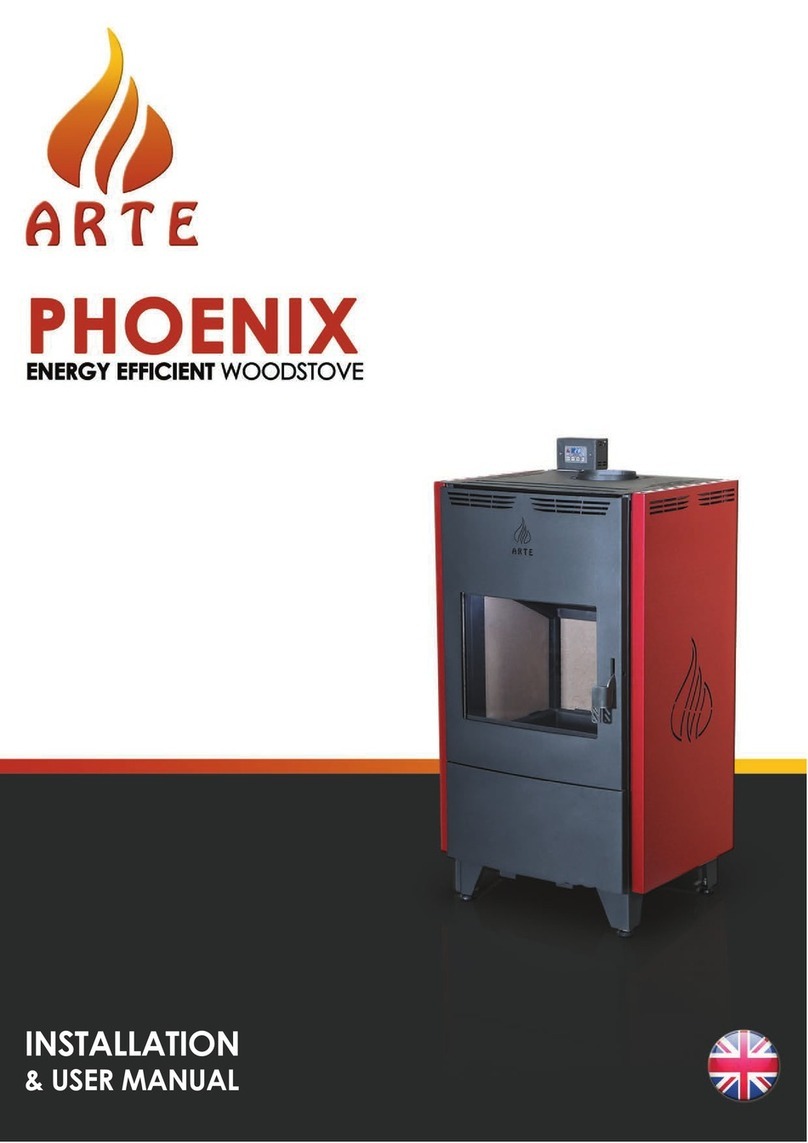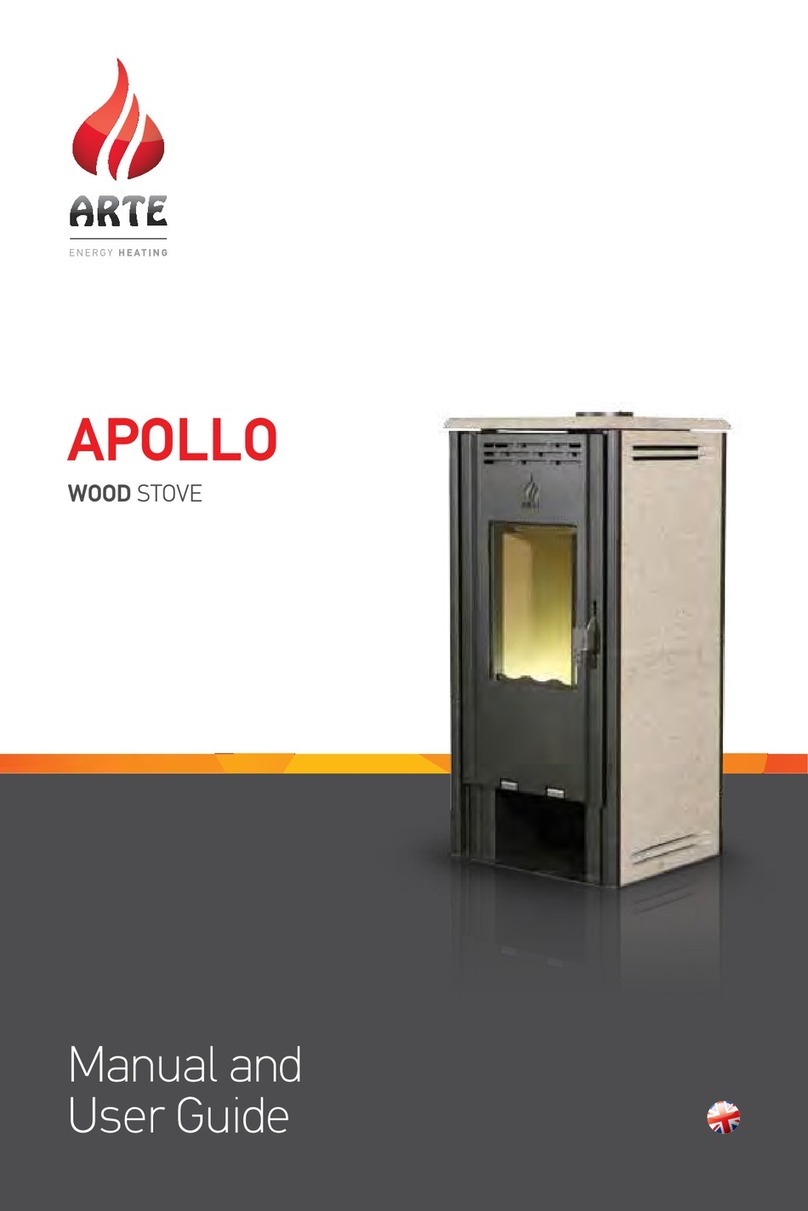
40 |41
9. CLEANING AND CARING FOR YOUR STOVE
9.1 Exterior Maintenance
The stove surface is painted with heat-resistant paint. It is best kept clean by vacuuming with a soft brush
attachment or by wiping with a lint-free cloth.
Over a period of time, the painted surface may become slightly grey. A canister of touch-up ARTE® spray
paint should be available from your stove supplier. This can be applied - in accordance with the instructions
- in just a few minutes. When first firing, after touching up, the stove will give off a slight smell as the paint
cures. Make sure to ventilate the room well during this phase.
9.2 Internal maintenance
Ash managing & disposal
Empty the excess ash on a daily basis or as needed. We recommend always keeping a layer (1 – 2 cm
thickness) at the base of the chamber to act as an insulating medium.
Empty the ash according to this procedure:
>Open the front door, and use a shovel to take out the excess ash.
>Dispose the ash in a metal container with a tight fitting lid.
>The closed container of ashes should be placed on a noncombustible floor or on the ground, well away
from all combustible materials, pending final disposal. If the ashes are disposed of by burial in soil
or otherwise locally dispersed, they should be retained in the closed container until all cinders have
thoroughly cooled.
When performing maintenance on your stove, always pro-
tect yourself, using safety goggles and gloves
Never empty a stove in operation.
Never use your household or shop vacuum cleaner to remove ash
from the stove.
Always remove and dispose of the ash properly.
For normal cleaning, moisten a paper towel with warm water and add some ash from the burn chamber.
Rub it over the glass and then clean the glass with clean water. Dry it well.
For heavier deposits that will not cleaning, use glass-cleaner, applied when the glass is cold, in accordance
with the instructions. Never use abrasive cleaners on the glass surface.
Reasons for dirty glass
>Fuel too wet
>Logs too large or not split
>Combustion temperatures too low
Glass
If the stove is generally run at the correct temperatures, there should be little or no dirt on the glass. If dirt
does settle during lighting, most will burn off as temperatures increase.
If you need to replace the glass, it should be replaced with the high temperature ceramic class supplied by
ARTE®, contact your ARTE®dealer.
Gasket
The gasket around the perimeter of the door may harden over a period of time. It should be replaced if it
becomes difficult to close the doors or if air starts to leak in around the perimeter of the doors, causing the
fire to become a little less controllable. An ARTE®rope gasket kit is available from your stove supplier.
Internal service parts
The flame-path equipment - consisting of the firebricks, the vermiculites, glass, flue collar and metallic
baffle - are subject to the extremes of heat produced by the fire. From time to time, one or other of these
parts may need replacing as a matter of routine maintenance.
All of these service parts can be bought from your ARTE®dealer, and we recommend that damaged parts
are replaced as soon as possible to avoid collateral damage.
Should the baffle be distorted by an over fire, the stove will still function, although its efficiency may be com-
promised. Replace it as soon as possible.
Reasons for fast internal wear and tear
>Persistent heavy firing
>Soot and ashes left to accumulate
The flame-path equipment, the ceramic rope and the paint
finish are not covered by guarantee.
BOX WOOD STOVE
During the combustion of wood, heat and fumes of carbon dioxide, carbon monoxide and water vapors are
produced.
During the secondary combustion, we add pre-heated oxygen at the upper part of the fire; as a result a
re-ignition of the carbon monoxide starts, giving us a high thermal output, along with minimization of the
operating costs and decrease in polluting emissions.
This way, we achieve the production of carbon dioxide and not monoxide which cannot be absorbed by plants.
To reduce the risk of breaking the glass, avoid striking the glass or
slamming the door.
Replace broken glass immediately.
Do not operate your stove if the glass in the door is damaged.






























